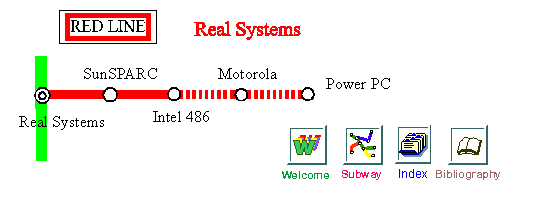

In Intel486DX processor memory is divided into 8-bit, 16-bit and 32-bit
quantities called byte, word and double word respectively. Words are
stored in two consecutive bytes in memory following the little-endian
notation as illustrated below.

In addition to the above units, the processor also supports two larger units of memory: pages and segments. Segments are variable size blocks of memory whereas pages are all of equal size--usually 4K bytes. Intel486 provides maximum flexibility to the designer by allowing both paging and segmentation.
Intel486 has three distinct address spaces.
Paging divides user's program into multiple pages of same size. At any instant of time, pages which are active, are kept in main memory. This is due to the fact that paging exploits the locality of reference property exhibited by the programs. To learn more about how this set of active pages are chosen see the Yellow Line--Implementation and Performance. The paging mechanism in Intel 80486 processor uses a two level paging scheme.
